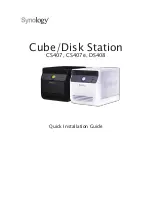
Configuration Methods 33
DHCP/BOOTP
5.
If there are a number of predefined options available for a field, you can scroll through those
items by pressing the
Space Bar
or you can type
l
(lowercase L) to get a list of options, use the
up/down arrows to highlight the option you want, and then press
Enter
to select it.
DHCP/BOOTP
Overview
Several Terminal Server parameters can be configured through a DHCP/BOOTP server during an
Terminal Server bootup. This is particularly useful for configuring multiple Terminal Servers.
Not all configuration parameters are supported in the DHCP/BOOTP configuration (see
DHCP/BOOTP Parameters
on page 34
for supported configuration parameters), so you will need to
use another configuration method, such as DeviceManager, WebManager or CLI, to complete the
configuration.
Features
DHCP/BOOTP supports the following unique features:
z
DHCP/BOOTP can supply the Terminal Server’s IP address.
z
The DHCP/BOOTP server can configure certain server and user configuration parameters when
the Terminal Server is booted.
z
The DHCP/BOOTP server can download a new version of firmware when a Terminal Server is
rebooted.
z
The DHCP/BOOTP server can download a full configuration file when a Terminal Server is
rebooted.
Connecting to the Terminal Server Using DHCP/BOOTP
The Terminal Server will automatically request an IP address from the DCHP/BOOTP server when
the
Obtain IP address automatically using DHCP/BOOTP
parameter is enabled. To enable the
Obtain IP address automatically using DHCP/BOOTP
parameter, follow the directions in
Using a
Direct Serial Connection to Enable BOOTP/DHCP
on page 39
.
Using DHCP/BOOTP
To use DHCP/BOOTP, edit the bootp file with Terminal Server configuration parameters. You can
use DHCP/BOOTP to perform the following actions on a single or multiple Terminal Servers on
bootup:
z
auto-configure with minimal information; for example, only an IP address
z
auto-configure with basic setup information (IP address, subnet/prefix bits, etc.)
z
download a new version of firmware
z
download a full configuration file
DHCP/BOOTP is particularly useful for multiple installations: you can do all the Terminal Server’s
configuration in one DHCP/BOOTP file, rather than configure each Terminal Server manually.
Another advantage of DHCP/BOOTP is that you can connect a Terminal Server to the network, turn
on its power and let autoconfiguration take place. All the configuration is carried out for you during
the DHCP/BOOTP process.
















































